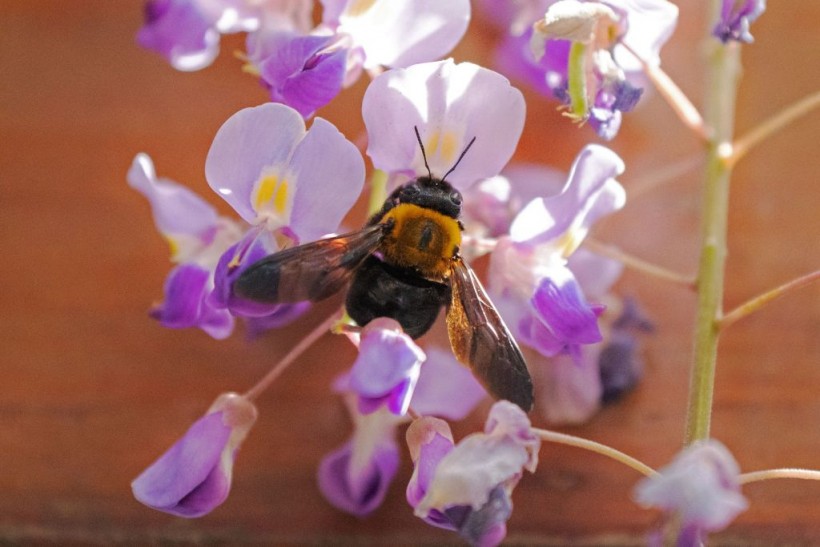Bumble bees are fuzzy pollinators that carry yellow packets of pollen on their back legs. These packets can weigh up to a third of their body weight and help them feed their colonies.
But they also have a surprising effect on the bees' body temperature: they make them hotter.
A new study from North Carolina State University123 finds that carrying pollen is a workout that significantly increases the body temperature of bumble bees.
This new understanding of active bumble bee body temperatures raises questions about how these species will be impacted by a warmer world due to climate change.
Pollen Packs Heat Up Bumble Bees
 (Photo : PHILIP FONG/AFP via Getty Images)
(Photo : PHILIP FONG/AFP via Getty Images)

The researchers measured the body temperature of bumble bees carrying different amounts of pollen and found that the more pollen they carried, the hotter they got.
Specifically, they found that bee body temperatures rose 0.07°C for every milligram of pollen that they carried, with fully laden bees being 2°C warmer than unladen bees.
This is a significant increase, considering that bumble bees are ectotherms, meaning that their body temperature is mostly determined by the environment.
Unlike honey bees, which can cool down by fanning their wings, bumble bees have limited ways to regulate their temperature.
They can shiver to warm up during cold days, but not much is known about how they can tolerate heat.
Also Read: Bees Activate 'Medicinal Properties' Against Parasite Infection During Pollination
Climate Change Could Threaten Bumble Bees and Pollination
The researchers suggested that carrying a full load of pollen on a hot day could put bumble bees at greater risk of reaching the potentially lethal end of their temperature tolerance
"Getting warmer from carrying pollen could put bumble bees in the range of those stressful, critically hot temperatures," said Malia Naumchik, a former applied ecology minor undergraduate and lead author of the study, as per Eurekalert.
This has important implications for bumble bees and climate change.
As environmental temperatures increase, the bees' operational range of temperatures could shrink significantly.
Bumble bee numbers and species diversity are already on the decline across the world, particularly in areas that are warming up due to climate change.
But the exact mechanics of how climate change is impacting bumble bees are not yet fully understood.
This finding could be one piece of that puzzle.
Pollen is crucial for every stage of a bumble bee's life history. Newly emerged queens in the spring need to feed themselves and then feed their sister workers.
Those workers then take over feeding the colony, larvae, and future queens.
Without pollen, or enough pollen, colonies will not thrive - risking future colonies and the species as a whole.
This may also have implications for pollination in general, and could impact agriculture and ecosystems alike.
"We need to know how bumble bees may change their behavior, to better understand how this could affect how much pollen they collect and how much pollination they perform during hot days," said Elsa Youngsteadt, a professor in applied ecology and supervisor of Malia's research.
The researchers hope that their study will inspire more research on how bumble bees cope with heat stress and how climate change will affect their survival and pollination services.
Related article: How Robotic Bees Could Help Healthy Colonies, Environment
© 2024 NatureWorldNews.com All rights reserved. Do not reproduce without permission.



![Climate Change is Reducing Dust Levels Worldwide as Arctic Temperature Warms [Study]](https://1471793142.rsc.cdn77.org/data/thumbs/full/70320/280/157/50/40/climate-change-is-reducing-dust-levels-worldwide-as-arctic-temperature-warms-study.jpg)

